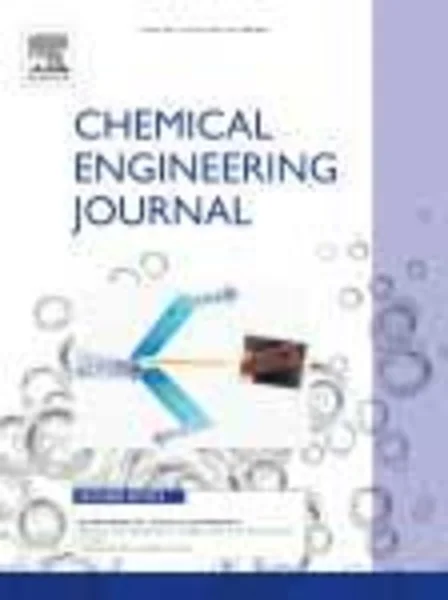-
the adsorption mechanism of elemental mercury on cuo (1 1 0) surface
جزئیات بیشتر مقاله- تاریخ ارائه: 1392/01/01
- تاریخ انتشار در تی پی بین: 1392/01/01
- تعداد بازدید: 661
- تعداد پرسش و پاسخ ها: 0
- شماره تماس دبیرخانه رویداد: -
understanding the impact of cuo in selective catalytic reduction (scr) process for elemental mercury removal will broaden the applicability of scr system in hg removal strategies. first principles quantum mechanical methods based on density functional theory were used to investigate the adsorption mechanism of hg on cuo (1 1 0) surface. the cuo (1 1 0) surface was represented by a periodic model, and different adsorption sites were considered. the electronic structural changes upon adsorption were also studied to better understand the surface reactivity. the results show that elemental mercury binds weakly to the o-terminated cuo (1 1 0) surface, which indicates a physisorption mechanism. on the contrary, hg is strongly adsorbed on the cu-terminated cuo (1 1 0) surface and chemisorption is the likely adsorption mechanism. the adsorption of hg on cuo (1 1 0) surface is mainly by the cu-terminated mode. cusubtop is the most advantageous adsorption site with an adsorption energy of −116.76 kj/mol. in addition, bond population analysis indicates that hg atom preferably adsorbs on cuo (1 1 0) surface with the bonding of cu atoms. according to the calculation of the partial density of states of the surface atoms, strong mercury interactions with the surface cause a significant overlap between the d-state of mercury and the s-states of cu.
مقالات جدیدترین رویدادها
-
استفاده از تحلیل اهمیت-عملکرد در ارائه الگوی مدیریت خلاقیت سازمانی و ارائه راهکار جهت بهبود
-
بررسی تاثیر ارزش وجوه نقد مازاد بر ساختار سرمایه شرکت های پذیرفته شده در بورس اوراق بهادار تهران
-
بررسی تأثیر سطح افشای ریسک بر قرارداد بدهی شرکت های پذیرفته شده در بورس اوراق بهادار تهران
-
بررسی تأثیر رتبه بندی اعتباری مبتنی بر مدل امتیاز بازار نوظهور بر نقد شوندگی سهام با تأکید بر خصوصی سازی شرکت ها
-
تأثیر آمیخته بازاریابی پوشاک ایرانی بر تصویر ذهنی مشتری پوشاک ایرانی (هاکوپیان)
-
بررسی عوامل روانشناسی فیزیولوژی در طراحی فضاهای معماری و شهرسازیِ کودکان
-
بررسی رفتار گذرای فیلم مایع آرام در ترموسیفون دو فازی بسته
-
بررسی موانع و راهکارهای توسعه صادرات غیر نفتی در شرایط تحریم
-
بررسی عملکرد مدیریت شهری در توسعه فضاهای سبز (نمونه موردی: منطقه 3 کلانشهر تبریز)
-
comparative analysis of financial markets and the public sector for iran and norway
مقالات جدیدترین ژورنال ها
-
مدیریت و بررسی افسردگی دانش آموزان دختر مقطع متوسطه دوم در دروان کرونا در شهرستان دزفول
-
مدیریت و بررسی خرد سیاسی در اندیشه ی فردوسی در ادب ایران
-
واکاوی و مدیریت توصیفی قلمدان(جاکلیدی)ضریح در موزه آستان قدس رضوی
-
بررسی تاثیر خلاقیت، دانش و انگیزه کارکنان بر پیشنهادات نوآورانه کارکنان ( مورد مطالعه: هتل های 3 و 4 ستاره استان کرمان)
-
بررسی تاثیر کیفیت سیستم های اطلاعاتی بر تصمیم گیری موفق در شرکتهای تولیدی استان اصفهان (مورد مطالعه: مدیران شرکتهای تولیدی استان اصفهان)
-
بررسی تاثیر تغییرات سازمانی بر فرسودگی شغلی با میانجی گری حمایت سازمانی
-
ماهیت سنجی پیش پرداخت در عقود لازم و جایز از منظر فقه و قانون مدنی ایران
-
رابطه ورشکستگی با بیش ارزشیابی سهام و مدیریت سود و بیش اعتمادی مدیران
-
بررسی رابطه خستگی عاطفی و مسخ شخصیت مؤثر بر حسابرسان و وکلای دادگستری با فرسودگی شغلی (مورد مطالعاتی: حسابرسان و وکلای دادگستری شهر زاهدان)
-
investigating the influence of the combination of cement kiln dust and fly ash on compaction and strength characteristics of high-plasticity clays




سوال خود را در مورد این مقاله مطرح نمایید :